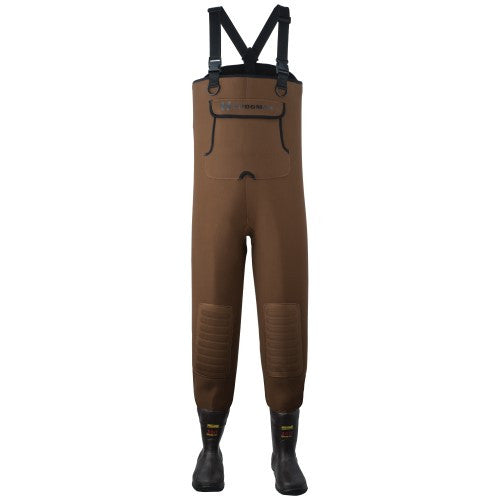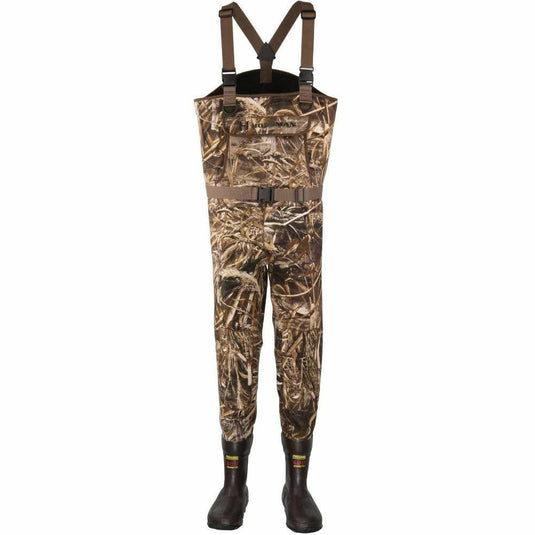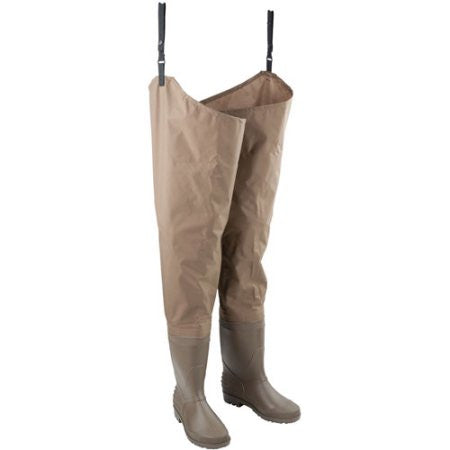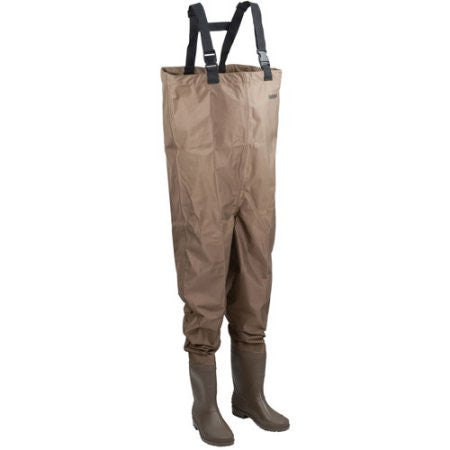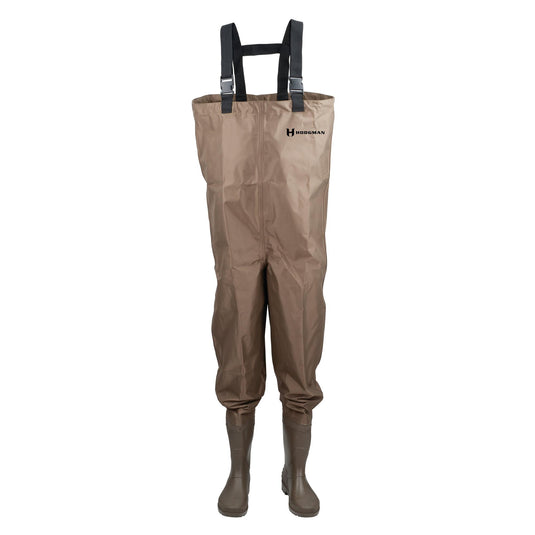Hodgman Waders
6 productsChoose the Right Gear
Conditions can vary from day to day and location to location. Selection of the right wader and footwear can make the difference between a great day and sitting on the sidelines. Follow these helpful tips to ensure you have a safe and enjoyable experience during your next outdoor adventure.
Warmer Weather
Breathable waders are often preferred over neoprene or PVC models as the lightweight, breathable construction allow sweat and built up body heat to escape while still remaining waterproof. Proper layering with a breathable wader enhances its versatility and functionality. When layering, avoid cotton and jeans for optimum performance in warm weather. When wading in shallow water, hip waders are a great option.", "ctaText": "Shop Hodgman Breathable Waders
Cold Weather
Understanding how to layer under your breathable waders will keep you warm and comfortable all day long. Add or shred layers as your activity levels increase or the weather conditions change. When conditions are going to be cold all day long, you can add extra warmth with the Core Insulated wader liner and eliminate the need for an extra base layer. Neoprene waders, in both stocking and bootfoot models, provide excellent insulation in cold weather and when wading in cold water. Neoprene is a non-breathable material that keeps you warm by trapping a layer of air and neoprene material between you and the outside conditions. While heavier the breathable fabrics, neoprene stretches with you, allowing for a close body fit that helps retain body heat. Choose 3.5mm neoprene for cold conditions and up to a 5.0mm neoprene for the coldest conditions.
Footwear
Selecting the right outsole for the type of conditions you are wading prevents slipping and ensures optimum footing. Different conditions require different types of footwear and bottoms. Felt soles are often preferred in algae covered rock bottom rivers and shorelines, gripping well on the slippery rock beneath you. Rubber soles are helpful when terrains are gravel, mud or grassy. They are also a good choice for snowy or icy conditions. Rubber soles are the choice in areas where felt is banned in an effort to prevent the transfer of invasive species. The improved traction of studded soles, combines with a wading staff can make wading safer when fishing deep, fast waters with string current.
Durability
Consider the type of terrain you will be in. If you are in thick brush or rough, branchy terrain or sitting in a boat, using a five-layer fabric in the leg and seat will help your waders stand up to the environment and prevent pinhole leaks that can ruin your day. When choosing neoprenes, consider thet ype of weather that you will be in and also the terrain. As a rule of thumb, the thicker the neoprene wader, the more durable and warmer the wader will be.
